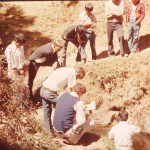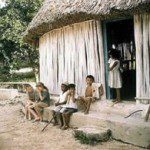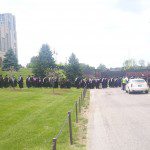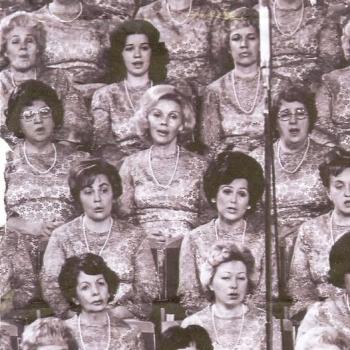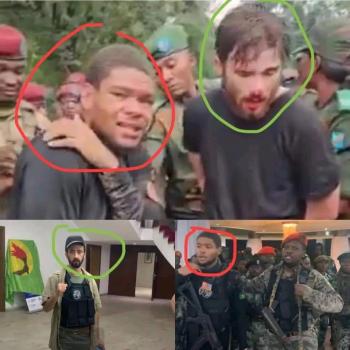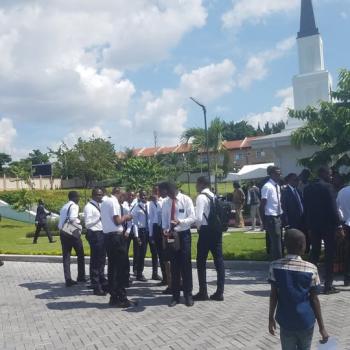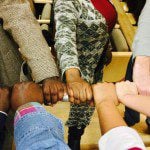The title for Robert Blair’s PhD dissertation could compete in “Most Impressive.” The title was Yucatec Maya Noun and Verb Morpho-Syntax. He himself forgot the title in his later years, and said, “What on earth does that mean?” when his daughter reminded him of it.
Robert got his BA at BYU in English. He did not realize it at the time, but he was already headed into linguistics when he pursued his MA—again in English, but with a twist. He compared the translations of several Bible verses. By the time he was ready to pursue his PhD, there were few universities with Linguistics programs. He chose Indiana University. Though he was already fluent in Russian and Finnish, he was not yet fluent in Spanish. He took his mother, a Spanish teacher, and two of his brothers-in-law (Joe and Dee Groberg) to Mexico, where he began learning not only Spanish but Yucatec Maya. As was typical of Robert, he found modest lodging at a little restaurant, and the group rented an empty house—on condition from the landlord that they attend Mass every night. Mass was recorded, Latin, and the teenage Groberg boys found it almost intolerably boring. Nonetheless, they abided by the condition.
Marguerite Blair, Robert’s mother, was a proper woman and stayed in better lodgings. She observed once to Robert that the Indians in that area didn’t really know how to speak Spanish. They referred to bread as “pam” rather than “pan.” Robert gently corrected her. “No, Mom. It IS ‘pam’ to them, so that’s their word. We are here to learn from them, not to teach them.”
During that trip, Robert met the Mayan people who would later help him develop his understanding of their language’s grammar. The group of gringos stayed in Piste and later in Xocampeche, near Merida. Five years later, as he was completing his dissertation, Robert took his family—including the three oldest of his five children, and two of his wife’s siblings, Elizabeth and Lewis Groberg. The Blair children slept in hammocks and interacted with the natives in Xocampeche.
Robert referred to those Mayans who helped him understand the structure of the language as his “beloved teachers.” His focus soon turned from the grammatical details of the Mayan dialect to stories, often from the Bible, which his teachers would re-tell using their own cultural details. When Robert worked with his friend Manuel Tum, the two of them invented a version of the Prodigal Son (Luke 15). In the Mayan version, the prodigal had long hair after his years away from home. In Yucatec Mayan culture, long hair on a man is a sign of extreme poverty or depravity. Robert further dramatized the story with his own story-telling abilities. The scriptures say that when the son was “still a great way off, his father saw him and had compassion, and ran and fell on his neck and kissed him.” In Robert’s version (in which the son had a name), the story evolved:
Now Johnny came within sight of his father’s house. His father was standing on a hill from where he could look down on the road. Every day he had stood there, hoping to see if by chance his lost son might be coming up the road. And that day, as always, he was there hoping and praying. Suddenly he saw the figure of a young man approaching. His heart jumped. The boy’s clothes weren’t recognizable. They were tattered and dirty. The boy was limping. His hair was long and disheveled. But the father recognized his son, and his heart filled with compassion. Johnny had come home! He ran joyously to meet his son and threw himself on his neck and kissed him. “Johnny, my son, you’ve come back!”
Robert returned to the story many times as he taught a variety of languages. He kept the sentences short and simple. It was not just a story but an avenue to a new world. He would repeat particular phrases over and over. “The boy”; “the father”; “his son”; “my son”; “I have sinned”; “I know”; “house”; “road”; “lost”; “his heart”. By the end, the audience would have a small vocabulary in the new language.
Robert received his PhD in 1963, but was not present for the convocation. He wore his IU robes only when essential (such as when he was receiving an award), and referred to them as “a monkey suit.” Fifty years later, however, his granddaughter, Kaila Lifferth, received her Master’s degree from Indiana University, and did wear hers, though with attitude.
By the end of his life, Robert had, with some of his students, written grammars of languages which previously had no written grammars, particularly Mayan dialects: Cakchiquel, Mam, and Maya. His protegee, John Robertson, spoke of the excitement he felt when working on these projects:
What I learned from him on our first trip to Guatemala doing field work in Patzicia was the very foundation of all my professional work since. While there, I couldn’t sleep at night, not because I was uncomfortable on the hardwood floor of the chapel, but because my mind was on fire—thinking about, analyzing the structure of the Cakchiquel verbal complex. So many things remained unresolved that couldn’t wait for morning so I could find answers from our Cakchiquel consultant. At the time, I thought if this is linguistics, I’m going to be paid for my new-found hobby.
Soon, BYU established the Linguistics program, with Robert Blair as the founding chair.
His methods were unique. He tried to approximate the original language learning process all children go through. He invented games, and he told stories. Indeed, Robert Blair braided his gift for story telling into his gift for linguistics.
A few months before his death, he said to his children, “I focused too much on my career. I was not as present for you—or your mother–as I should have been. I spent too much time in my office. But I did do one thing. I told you stories.”
His children knew that whenever their father would repeat a story, he would add details to involve his listeners. His ultimate purpose was to find stories which would appeal to everyone in the world, and bring any who would participate in these story-based language learning quests into a common, human experience. When invited to give a devotional at BYU shortly before his retirement, he chose to tell stories. His theme was reconciliation. Indeed, that was the theme of his life. Reconcile differences. Bring people together. Find common ground. Forgive. Learn. Become one.
Robert was shocked in the final decade of his life to realize that he had developed a prejudice against Muslims, based on the acts of a few radicals. In response to what he considered a grave sin–reducing a people to the misdeeds of a few–he researched the languages which members of the Taliban spoke. He simply announced one day, “I am going to learn Pashto.”
And he did.


